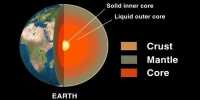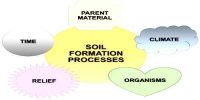By trapping heat in the Earth’s atmosphere, greenhouse gases are the driving force behind global warming. Methane is a greenhouse gas that traps more heat than carbon dioxide and can stay in the atmosphere for up to 12 years. Landfills, coal mining, fossil fuels, and animal husbandry are major sources of methane emissions. However, there is another source of methane emissions: the sea.
Methane gas emissions through the oceans are caused by geological processes that occur on or near the ocean floor and are exacerbated by stress and fractures. It is not well understood how ocean methane emissions work, but if these emissions reach the atmosphere, it could have an impact on the global methane budget. A recent study of the Arctic Ocean revealed in nature suggests that sea-level changes may affect methane emissions.
Co-author Dr. Andreia Plaza-Faverola said in a press release, “Earth systems are interconnected in the way we are still judging, and our research reveals an interconnection between the Arctic: the moon creates tidal waves, tides change pressure and create currents at the bottom that affect seabed and affect submarine methane!” study.
The results of the study showed that the change in the tidal wave of the sea surface was combined with the change in the release of gas. Dr. Favorola explained, “We have noticed that the water retention of gas in sediments within one meter from the coast is also at risk for slight pressure changes in the water column. Low tide means low hydrostatic pressure and high intensity of methane emissions. High tide, high pressure, and low release intensity”
The study was conducted at Vestnesa Ridge, a comprehensive study system of methane spp. Svalbard is a Norwegian island group in the Arctic Ocean, located between Norway and the North Pole. The researchers measured pressure and temperature data from two piezometers 80 kilometers (49.7 miles) away. High and low tide measurements were used to determine how sea levels affect gas water retention.
This indicates that even small changes in sea level can affect methane gas emissions from the coast. Researchers have claimed that global warming may mean an increase in ocean levels, but it is clear that rising temperatures will increase sea gas output. Methane is also less likely to reach the atmosphere in deep water.
The authors of the study noted that future research needs to be carried out in shallow water, over a long period of time. It is deeper in shallow water due to the possibility of reaching the false atmosphere. Our understanding of how sea-level changes can affect the release of this greenhouse gas from our oceans will increase.














